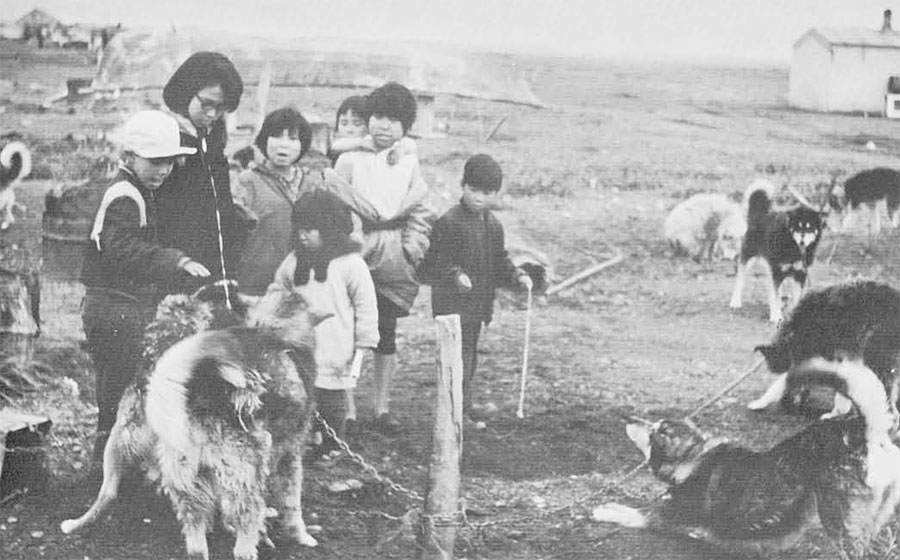
At the camp of Onion Portage on the Kobuk River, I was struck by the number of youngsters who played tag and hide-and-seek in and around our excavations every evening after the work had stopped. And there were only four Eskimo families with us to account for these shoals of small fry. Then, Don Foote from Magill University flew in one day to visit us and when he was bringing me up to date on the contemporary human geography of the Arctic, he observed that Eskimos are increasing faster than any other race in the world. Ten or twelve children in one family are not uncommon, and now they survive.
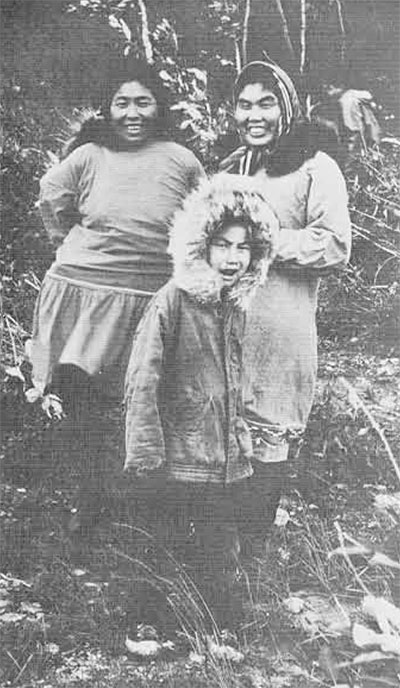
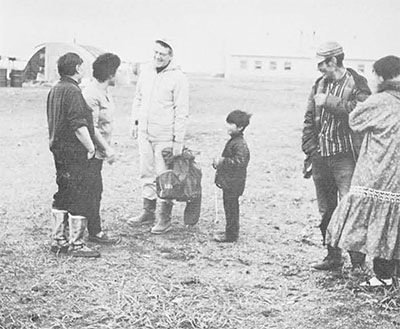
That is for me the most startling change in the Arctic since I worked there twenty-five years ago. Then I remember lamenting that the world could ill afford to lose the only people in America who had established permanent homes on the Arctic coast.
But Eskimos are not the only prolific creatures in the Arctic these days. Seals and caribou are unusually numerous. And moose are appearing on the Arctic coast for the first time in history. (There are currently many amusing stories about Eskimo who see a moose for the first time.) The obvious explanation, of course, is that more abundant food supplies support a larger human population, particularly when added to the fact that medical attention, Federal welfare programs, and highly paid jobs are all on the increase. But the prosaic explanation is not nearly so interesting as another highly speculative situation.
Since my time in the Arctic, we and the Russians have released enormous doses of radioactive debris into the atmosphere, particularly in the northern hemisphere. The biochemists tell us that lichens, upon which the caribou and reindeer feed, absorb these radioactive materials faster than other living things, and because of this, these animals and the men who feed upon them are already considerably more radioactive in the Arctic than in other regions. Can there possibly be any connections between radioactivity and birth rate? In the Arctic these days, one cannot help but wonder.
To return to work in the Arctic after a generation is to be something like Rip Van Winkle. When I landed at Onion Portage ( in a Beaver on pontoons) one of the Eskimos immediately took my picture with his brand new Polaroid color camera. Later the same Eskimo put me in touch with the office in Philadelphia, via his radio transmitter–which was powered by his daughter on a bicycle generator–and I was also to learn from him that many of the Eskimos are now substituting snowmobiles for their dog teams. I remember formless Eskimo girls in fur parkas covered by a kind of Mother Hubbard in cotton. Today they are in stretch pants and nylon jackets and–like women ill-advised in our urban shopping centers–they often spend the day in hair curlers. Their brothers are also in stretch pants and in Kotzebue this past summer, there was a fad for straw hats. Their fathers and mothers amuse themselves with speedboats and tape recorders. Like the rest of the world, the Arctic is absorbed in the technological revolution. But the fascinating thing is that in spite of all the new gadgetry, the new jobs with the Defense Department, weather stations, and mining operations, the Eskimo remain hunters of seals, caribou, and whales. Our workmen (who preferred archaeology to the new mining operation on the Kobuk River) often dropped their shovels and trowels and dashed off after a bear, a moose, or a caribou.
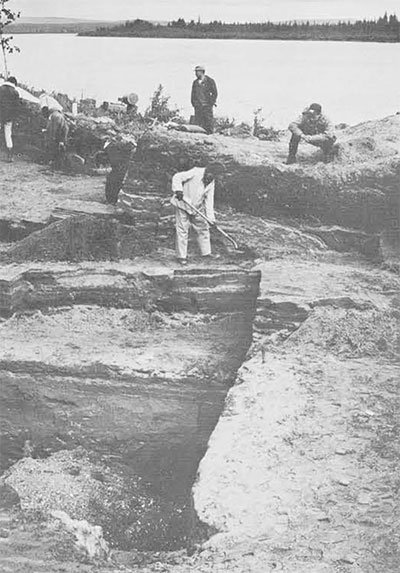
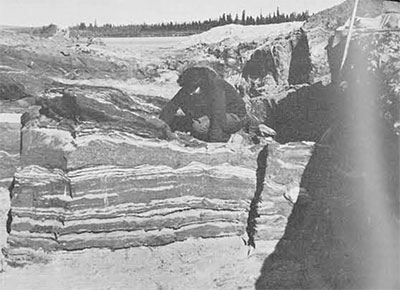
In fact, the site at Onion Portage is still, after 8,000 years of occupation, a famous hunting and fishing site. Great herds of caribou still move along the ridge extending outward from Jade mountain on the southern flanks of the Brooks range, which is cut by the Kobuk River at this point, then swim the river at Onion Portage. In the river they could easily be killed with spears from boats. More than thirty layers of occupation separated into eight distinct bands have now been exposed on the northern bank of the river. The occupation layers of cultural debris are filled with traces of caribou bones, the small “thumbnail” flint and obsidian scrapers which in some places are still used to soften dried caribou skins, and large quantities of charcoal from the fires which presumably dried and smoked the caribou meat. It is this abundant charcoal, often found in distinct hearths, which makes it possible to date each level precisely with the radioactive carbon method. All eight bands have now been securely dated in the University Museum’s radiocarbon laboratory.
The site was originally discovered by Dr. J. Louis Giddings in 1941, then partially excavated by him in the 1960’s for Brown University with grants from the National Science Foundation. After his death, I took charge of the excavation during the 1965 season as a Visiting Professor at Brown. Detailed studies and the reports on the site are now being undertaken by Douglas Anderson of Brown who was a graduate student at the University of Pennsylvania. Anderson will also continue in charge of excavations there, at least for two more years.
Returning to the Arctic in 1965, I was of course struck by the technological changes which had taken place since the last war. It is safe to say that these are more profound than any other in the entire history of the Eskimo. And yet, the astonishing deposit of cultural remains at Onion Portage, so neatly arranged in sharply defined and datable levels, tells a story of many dramatic changes of this kind. Certainly, one who excavates a site like that cannot help but conclude that the Arctic is not a refuge area where one primitive culture has survived intact into modern times. On the contrary, we see abrupt and complete changes in the primary working tools, so abrupt that I think we are dealing with the remains of distinct racial, tribal, or linguistic groups. All were caribou hunters encamped on the route of caribou migration which has remained unchanged, but there are at least nine distinct cultures represented in the eight bands of occupation. In some cases the hearths of one group lie only a few inches above the hearths of an earlier and they are radiocarbon dated at only a few years later. It looks as if one ethnic group forced out another to take over an ideal hunting site. Over-all, it is a picture of repeated change, certainly not so great as the current ones, but fundamental. Of course, it is never possible, with only archaeological materials, to measure the true meaning of these changes in terms of the lives of individual people, as one observes them today.
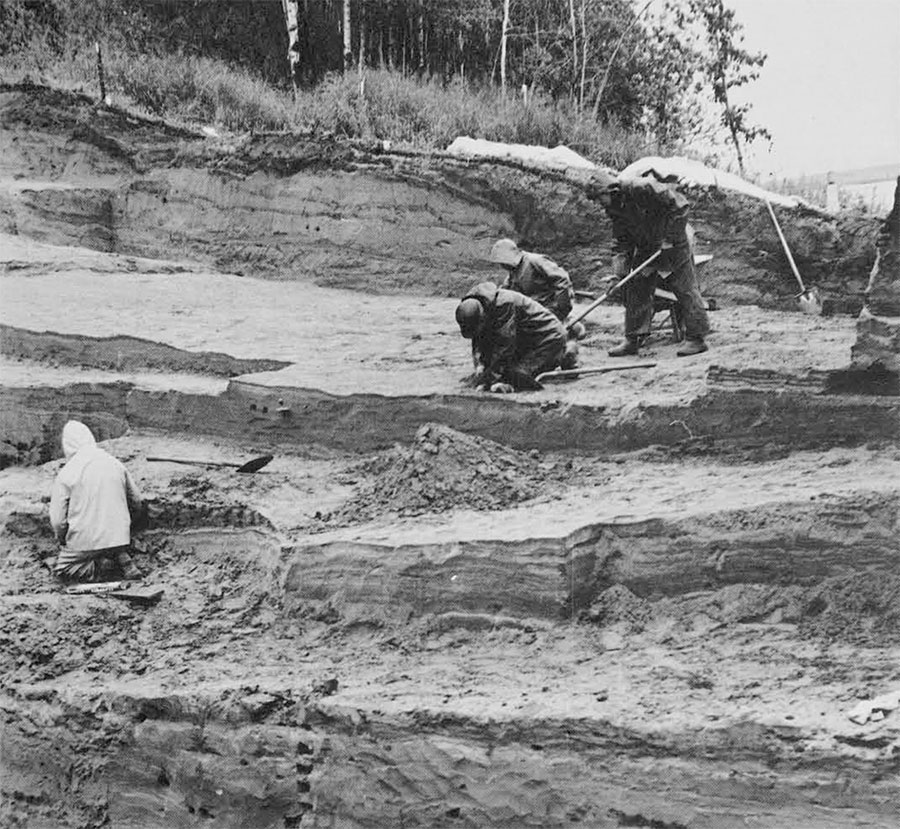
I was acutely conscious of this limitation in archaeological reconstruction when I ran into one of my old friends among the Athabaskan Indians of the upper Tanana River, Andrew Isaacson. Thirty years ago he and I hunted caribou in the wilderness between the Tanana and Yukon Rivers. On the first trip, before the time of bush pilots, we traveled for three weeks to reach the upper Tanana, via the Nabesna River. The Indians were already Christianized and they hunted with modern rifles, but they remained an isolated Indian community, living on their ancient hunting grounds. Then, small planes began to fly there on regular schedules and finally the Alaska Highway passed by just across the river. Andrew is now the head man of the group. He has built a cabin on the highway, flies to Juneau repeatedly as a political representative of the tribe, and goes hunting caribou in his Chevrolet. When I visited his cabin, Maggie, his wife, was cutting up three caribou which he had shot along the highway, 150 miles from his camp. He showed me a new $2,500.oo snowmobile which he had just purchased to replace his dog team and told me that he had made $300.00 a week working on the highway during the past summer. Maggie explained that many of the younger generation of upper Tanana Indians had married whites and several had gone “outside” to become ordinary Americans. How much of this complete alteration in personal lives could one detect in the archaeological remains of the present period? Probably only an abrupt change in working tools. There are still the same camp sites and the ubiquitous caribou bones representing the basis of life. Andrew also told me that there was no point in visiting the main settlement at Tanana Crossing, because “there were only kids there.” So, I gather that Indians in Alaska, like the Eskimo, are currently in no danger of extinction.
The story of archaeology in Alaska since the last war is the discovery of a highly complex history of Arctic peoples which can now be traced through a period of about 8,000 years. There is every reason to believe that the many diggers now working there will extend this period much farther into the past and fill in many puzzling gaps. It is a story of repeated change, and of vital peoples surviving in a harsh environment. The booming population of today and the technical differences are new only in degree, not in kind.
- Douglas Anderson and Bruce Lutz, a graduate student at Penn, watch two Eskimos excavating a hearth in Band V, Onion Portage.
- The central part of the Onion Portage excavations where we reached a depth of more than five meters. The lowest levels here date about 8,000 years ago.
- Drawings by Eskimo children at Point Hope 1940.
- A solid mountain of jade? Why it sounds like a tale Of marvels told in a fabled, exotic land In the East, and here it rises across the trail Of Artic caribou heading for Kobuk sand Where wild onions flower, and eight thousand years Of hunters, drifting from Asia, here made their stand And left flint scrapers, whetstones, heads of spears Laid neat in charcoal, centuries to a band… —From a sonnet by Philip Gray after visiting Onion Portage




